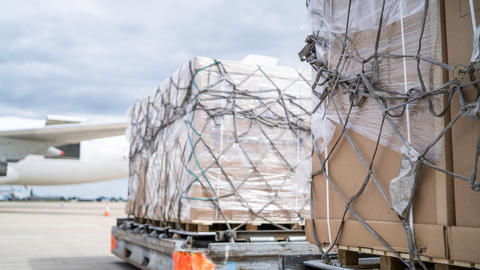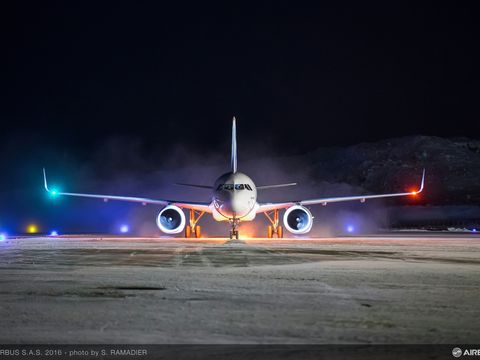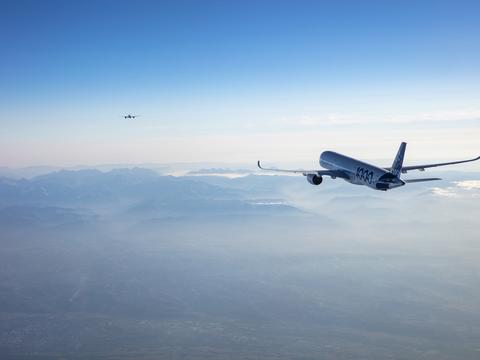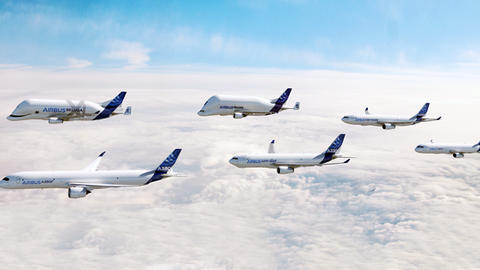Airbus freighter aircraft
Moving cargo. Connecting the world.
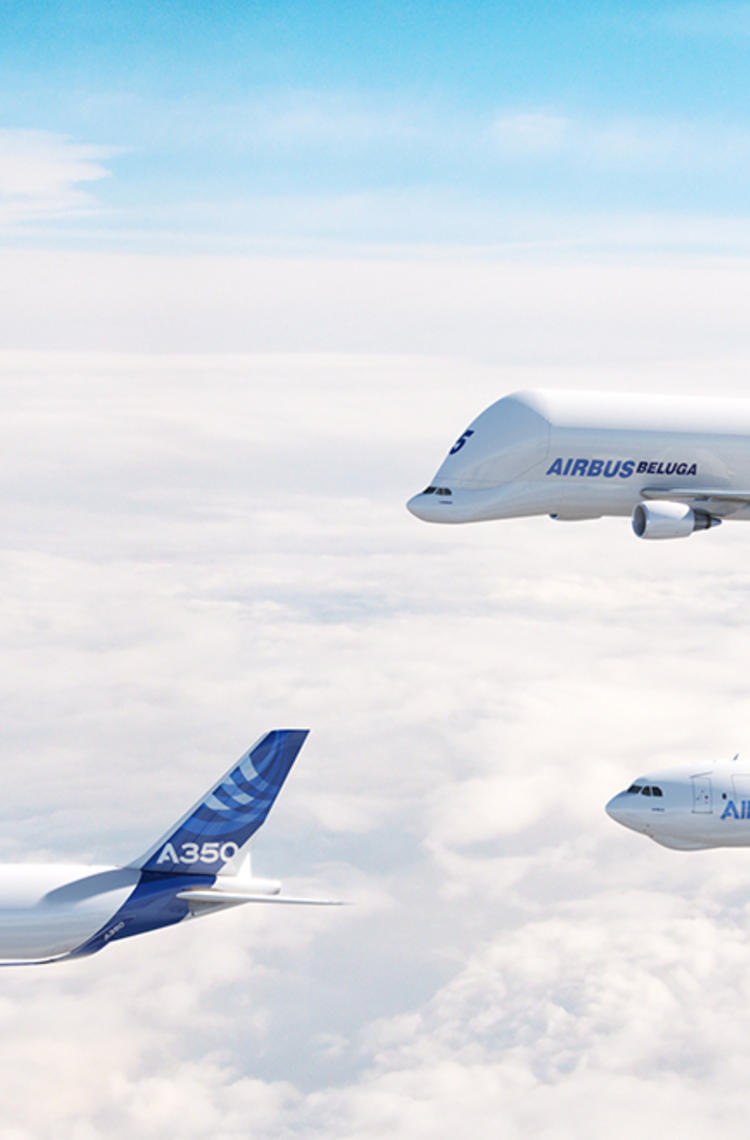
Supporting the flow of global trade
AIR CARGO TRANSPORT
Freighter aircraft are vital to our daily lives. These dedicated cargo planes carry everything from online purchases and medical supplies to machinery and fresh produce. As a critical part of the global economy, air cargo helps goods move quickly and reliably across continents.
The rise of e-commerce is driving steady growth in air freight. To meet this demand, the market will require thousands of additional freighters over the next 20 years. Discover the different types of cargo aircraft Airbus offers to serve this growing market and support global supply chain networks.
A cargo plane for every mission
FREIGHTER FAMILY
The Airbus freighter family is designed to meet the diverse needs of cargo operators worldwide.
Airbus freighters come in different forms and sizes, tailored to various mission needs to support multiple operators and markets. From single-aisle aircraft used for regional express cargo, to long-range widebodies transporting large volumes worldwide.
Some are dedicated freighters, designed from the outset to carry cargo. Others are converted freighters, or P2F (passenger-to-freighter), giving former passenger aircraft a second life. And the iconic Beluga for outsize transport missions.
Dedicated freighter
PURPOSE-BUILT EFFICIENCY
Our dedicated freighters are purpose-built to carry cargo rather than passengers. They are built from the outset with features such as reinforced floors, large cargo doors, optimised cargo bays and systems tailored to freight operations. On long-haul routes, they may include courier areas and crew rest compartments to support international operations. These aircraft are essential tools for moving goods efficiently across global supply chains.
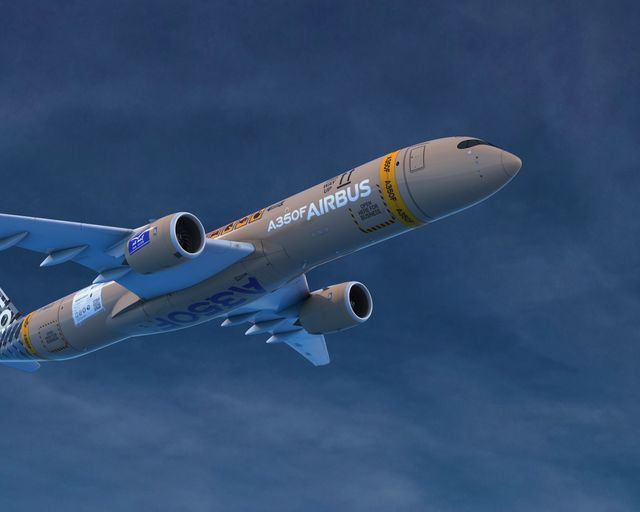
A350F – new-generation freighter
DEDICATED FREIGHTER
The A350F is Airbus’ latest addition to the large freighter market. Based on the proven A350 Family platform – known for long-range performance and high reliability – it brings the latest innovations in materials, systems and design efficiency to air cargo operations.
With a payload capacity of up to 111 tonnes and a range of 4,700 nautical miles, the A350F enables high-volume, long-distance routes. Key features include:
- The largest main-deck cargo door in its class, allowing fast and easy loading of large freight
- Up to 40% lower fuel burn and CO₂ emissions compared to older in-service freighters
- Compliant with new ICAO CO₂ emissions rules, meaning it meets aircraft environmental standards set for delivery from 2028 onwards
- Constructed with lightweight advanced materials such as carbon fibre and titanium
- Equipped with crew rest areas and courier compartments to support extended-range operations
The A350F is expected to enter service in 2027.
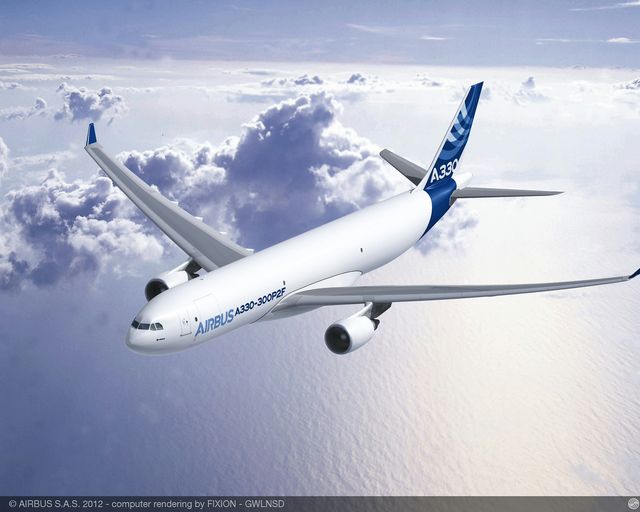
Converted freighter
Converted freighters were passenger aircraft in their former lives, hence our term for them: passenger-to-freighter or P2F. We modify versatile aircraft like the A320, A321, and A330 into converted freighters. The conversion process has many steps including reinforced floors, creating cargo loading doors and storage systems suited for freight. P2F is a cost-efficient way to expand cargo capacity while extending the useful life of reliable aircraft types.
- The A320P2F, transformed A320 Family passenger aircraft, is ideal for short-haul express and e-commerce routes.
- The A330P2F, transformed A330 Family passenger aircraft, combines high volume and fuel efficiency for longer regional and intercontinental missions.

Super Transporter: The Beluga transporting outsize cargo
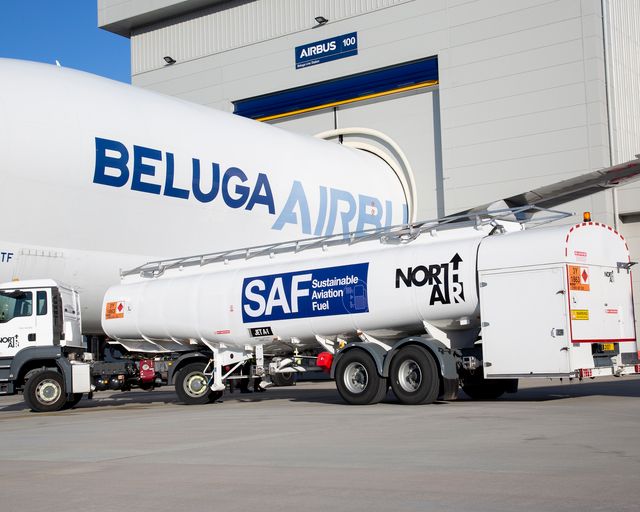
Decarbonisation of air freight
DECARBONISATION
At Airbus, we are committed to leading the decarbonisation of the aerospace sector. This includes reducing the CO2 emissions of our aircraft as well as our industrial environmental footprint worldwide. We are improving the fuel burn of our existing fleet by optimising wings and engines and employing lighter materials and new technologies, while the newly built A350F already meets the strict emissions standards of the future. We are innovating to make our aircraft capable to fly with even more SAF, up to 100% by 2030, and even exploring optimising flight routes for fuel efficiency.
Airbus Freighter FAQs
FAQs
What is a freighter aircraft?
A freighter aircraft, also known as a cargo plane, is an aircraft designed or converted specifically for transporting goods rather than passengers. They feature large cargo doors, reinforced floors, and a cabin optimized for holding standardized cargo containers.
What are the main types of cargo aircraft?
Cargo aircraft come in several types, including new-build dedicated freighters like the Airbus A350F, converted freighters (P2F) from passenger models, and specialized outsize transporters like the Airbus Beluga.
How do freighter aircraft differ from passenger aircraft?
Freighter aircraft have two decks, just like standard passenger aircraft, but both are used for the transportation of goods. On Airbus aircraft the cargo hold (lower deck) is similar to the one on passenger aircraft.
Why are freighters important for global trade and the economy?
Freighters facilitate rapid transportation of goods over long distances, enabling businesses to access international markets, reduce delivery times for time-sensitive goods, and maintain supply chains.
What types of goods are commonly transported by air?
Cargo planes transport a vast range of goods, including electronics, pharmaceuticals, luxury goods, time-sensitive and perishable items like food shipments.
What are the advantages of using air freight over other shipping methods?
Advantages of air freight include speed, reliability, reduced inventory costs, and the ability to transport goods to and from remote locations quickly.
Can retired passenger aircraft be converted into freighters?
Yes, retired passenger aircraft can be converted into freighters through a process known as freighter conversion, modifying the cabin layout to accommodate cargo. This is what we call P2F at Airbus, for passenger to freighter.
What technological innovations are used in Airbus freighters to improve cargo transport?
The Airbus A350F incorporates technologies like advanced avionics, aerodynamic designs for improved fuel efficiency, and enhanced cargo management systems for better loading and unloading.
How is freighter capacity calculated?
Freighter capacity is typically calculated using volumetric and weight measurements, with the lesser of the two determining how much cargo can be loaded, considering weight limits.
What is the most often flown cargo route in the world?
The most frequently flown cargo route is often cited as between Hong Kong (HKG) and Los Angeles (LAX), reflecting high demand for shipping electronics and other goods.
The latest freighter aircraft news
Discover more
-
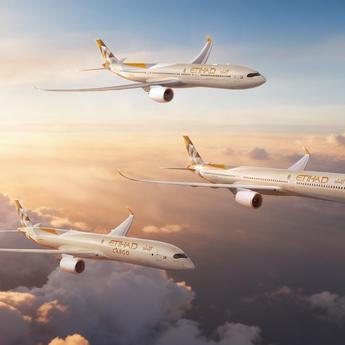
Etihad Airways grows its Airbus widebody fleet becoming a new A330neo customer,…
Press Release
Commercial Aircraft
Etihad Airways is placing orders for six A330-900s, three A350F and for seven additional A350-1000s. Read more about it. -

Air China Cargo becomes new Airbus A350F freighter customer
Press Release
Commercial Aircraft
-
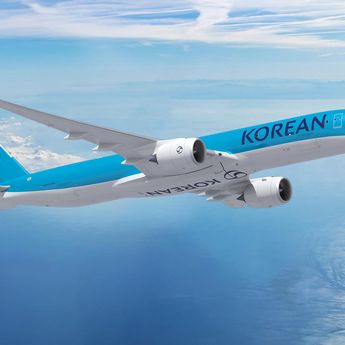
Korean Air becomes new A350F customer
Press Release
Commercial Aircraft
-
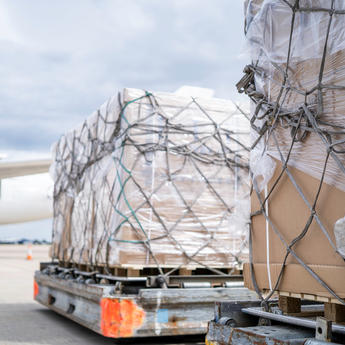
Airbus predicts world freighter fleet to grow 45% by 2044
Press Release
Commercial Aircraft
-
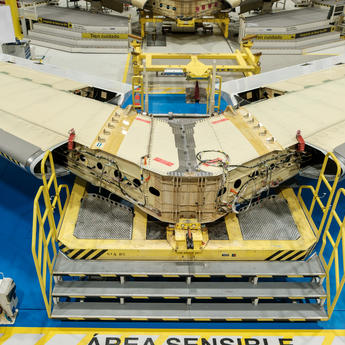
Airbus completes the first horizontal stabiliser for the A350F freighter in Spain
Press Release
Commercial Aircraft
